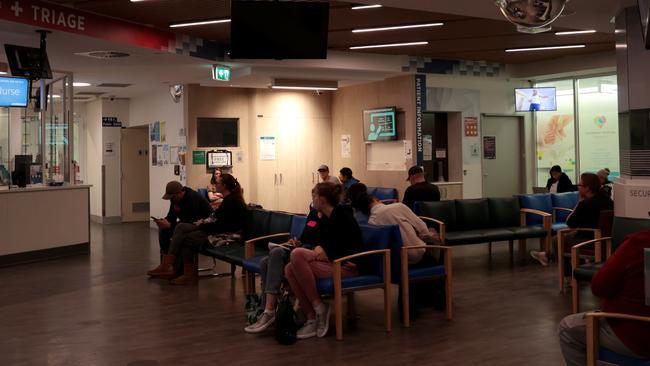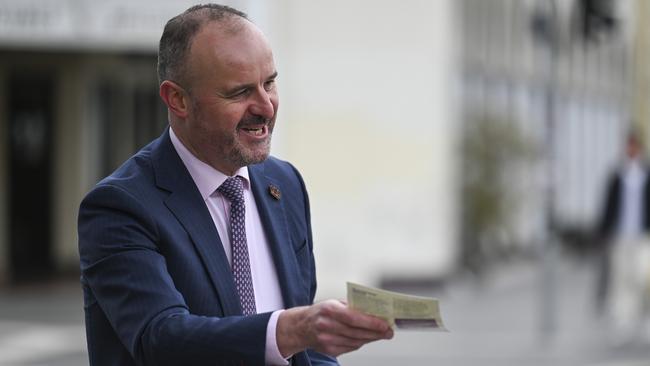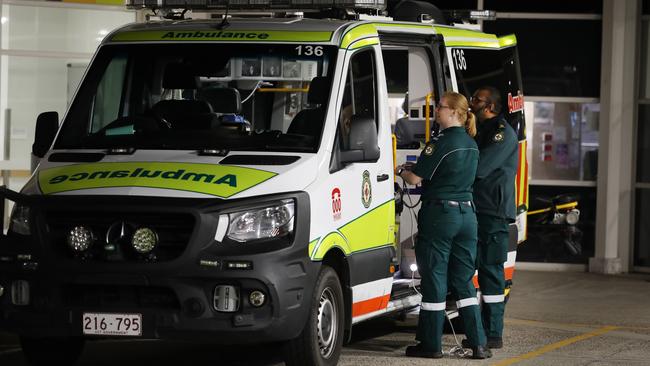ACT health system endures funding squeeze
The ACT health system is in crisis as its public hospitals are gripped by a funding squeeze, wait times at emergency departments balloon to the longest in the country and primary care collapse.

The ACT health system is in crisis as its public hospitals are gripped by a funding squeeze that has seen wait times at emergency departments balloon to the longest in the country.
The nation’s capital recorded the lowest increase in recurrent expenditure on public hospital services increasing by 2.7 per cent on average between 2017-18 and 2021-22, lagging behind NSW with 4.8 per cent, 5.5 per cent in Victoria and 5.5 per cent for Tasmania, figures from the Australian Institute of Health and Welfare show.
The number of people using hospital services in Canberra has increased by an average of 3.3 per cent a year over the last decade, Productivity Commission data shows.
The funding squeeze comes despite the fact the ACT has increased taxes, with the Labor government presiding over a massive increase in municipal rates, which have more than tripled over the past 10 years to an estimated $729m in 2022-23, even as land taxes have climbed by two-thirds to $191m.
Canberra has the worst emergency department wait times in the country with nearly half of patients – 47.6 per cent – waiting more than four hours to be seen by a nurse or doctor in the 2021-22 financial year.
This is compared with 38.6 per cent of emergency department patients having waiting times of more than four hours in 2013-14.
Australian Medical Association ACT president Walter Abhayaratna said the poor emergency department performance was the direct result of declining access to primary care, with Canberrans battling the second-lowest number of GPs for the population.
“The ACT health system is a canary in the mine, and it does start with the fact that we’re in this vicious cycle where the more we smash the GP workforce, the worse we’ll get in terms of managing chronic and complex diseases,” Dr Abhayaratna said.

“They’ll end up being presented to the emergency department, which will make emergency department queues worse, which will make people want to do more work in hospitals, which means there’ll be less GPs in the future – that’s the vicious cycle.”
There are two major hospitals in the ACT: Canberra Hospital in the city’s southside and North Canberra Hospital in the northside suburb of Bruce.
The 600-bed Canberra Hospital has been rocked by allegations of a poor workplace culture and bullying. The hospital’s plastic surgery unit this year had its training accreditation revoked, while accreditation is under review at the obstetrics and gynaecology unit and the child-at-risk health unit.
Staff members, who were not authorised to speak publicly, have told The Australian many departments suffer from a poor culture of “blame” compounded by understaffing and high workloads.
The ACT government in May forcibly acquired the Calvary Hospital in Bruce from the Catholic Church, renaming it the North Canberra Hospital and setting aside $1bn for a redevelopment starting in 2025.
While church groups and the federal Coalition have argued the forced takeover was a threat to religious freedom, the ACT government argues streamlining hospital services will improve performance. However, insiders have told The Australian the takeover has forced Canberra Health Services’ two most talented executives, Catherine O’Neill and Kath Wakefield, away from their usual duties.
ACT Chief Minister Andrew Barr said it was “not correct” that investment in health was declining in any way, saying about a “third of the ACT’s budget is invested into our public healthcare system”.
“The government’s investment in our public healthcare system, in ‘real spending’ or otherwise, has not decreased,” he said. “The government continues to expand our public health workforce. New public health facilities are under construction or planned, including the expansion of the Canberra Hospital (opening in 2024) and a new northside public hospital (formerly Calvary Hospital).

“The Territory will also be working with the commonwealth on a range of measures to strengthen Medicare and reform the primary healthcare system.
“This includes incentives to increase bulk billing, expand scope of practice of pharmacists and nurses, and enhancing community health facilities such as walk-in centres and urgent-care clinics.”
Royal Australian College of General Practitioners ACT president Charlotte Hespe said the Canberra health system had been impacted by the shortage of GPs, low bulk-billing rates and a lack of specialists, forcing most Canberrans to drive to Sydney for appointments.
“Despite the fact that it’s a capital city and we talk about most of the GP shortage as being rural and remote, Canberra has the lowest number of GPs per head of population for any of our cities,” Professor Hespe said. “And we’ve had … for quite some time difficulty in being able to meet the needs of the population.”
The ACT has consistently had among the lowest number of GPs with 99.3 full-time equivalent doctors servicing 100,000 people in 2021, compared to 122.7 in NSW and 121.1 in Victoria, with the NT coming last with 94.3.
The number of GPs practising in the ACT has increased slightly at 627, up from 482 in 2014, when the number of GPs per 100,000 was 78.8, data from the Productivity Commission shows.
The ACT had the lowest rate of non-referred attendances, with just 70.4 per cent being bulk-billed, below the national average of 88.3 per cent.
Patients also paid the highest out-of-pocket costs to see a doctor in the country, paying $48 on average to see a GP, above the national average of $42, and $118 to see a specialist, above the national average of $98 in 2021-22, Productivity Commission data said.


